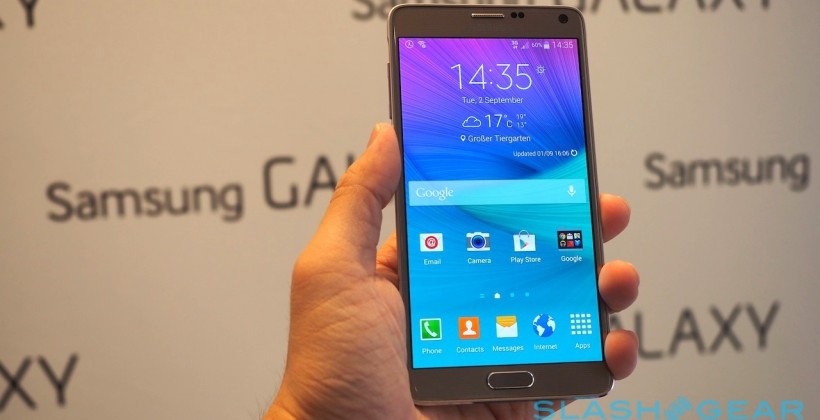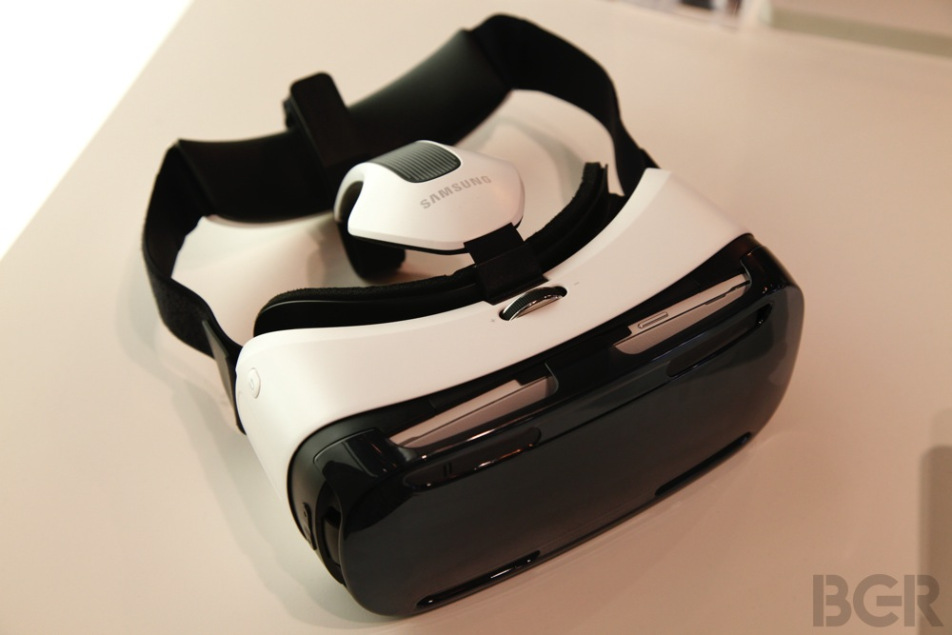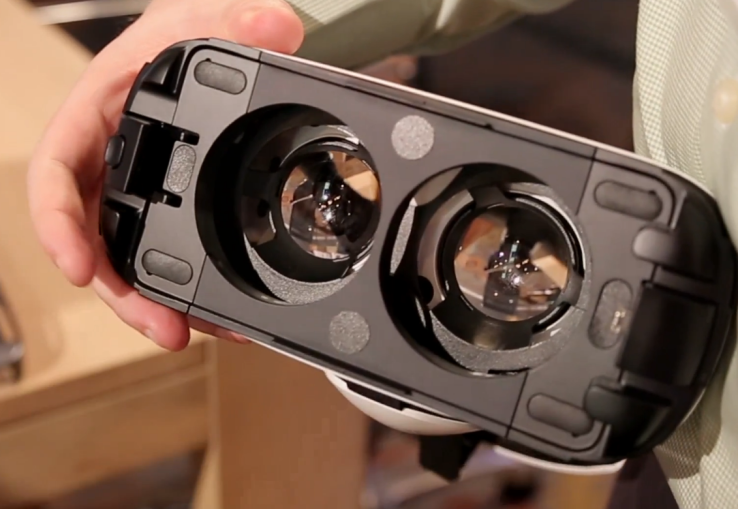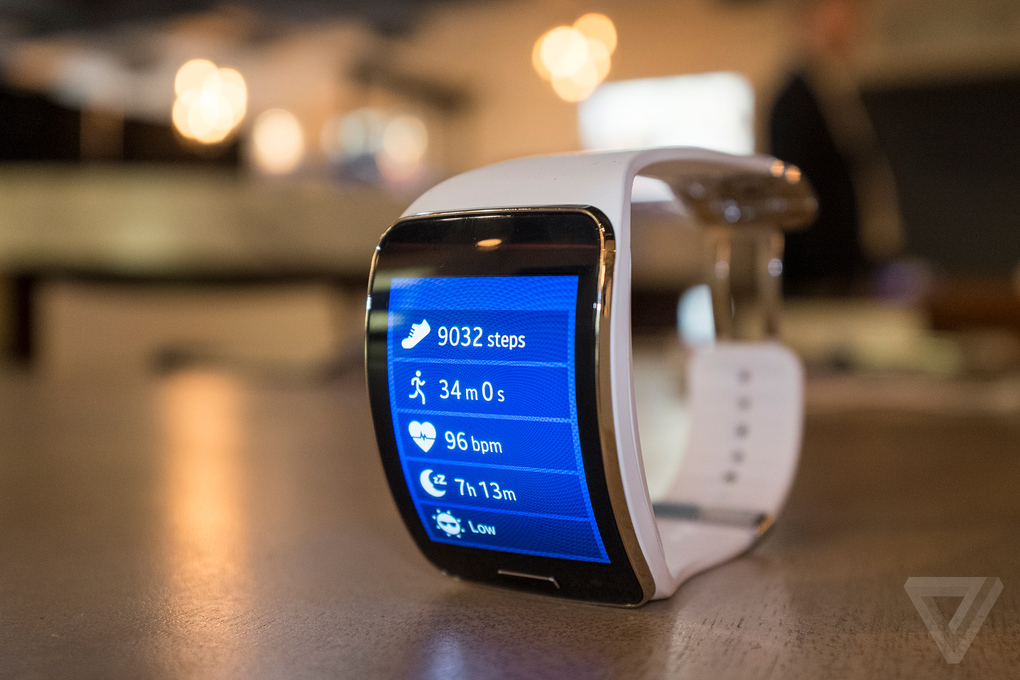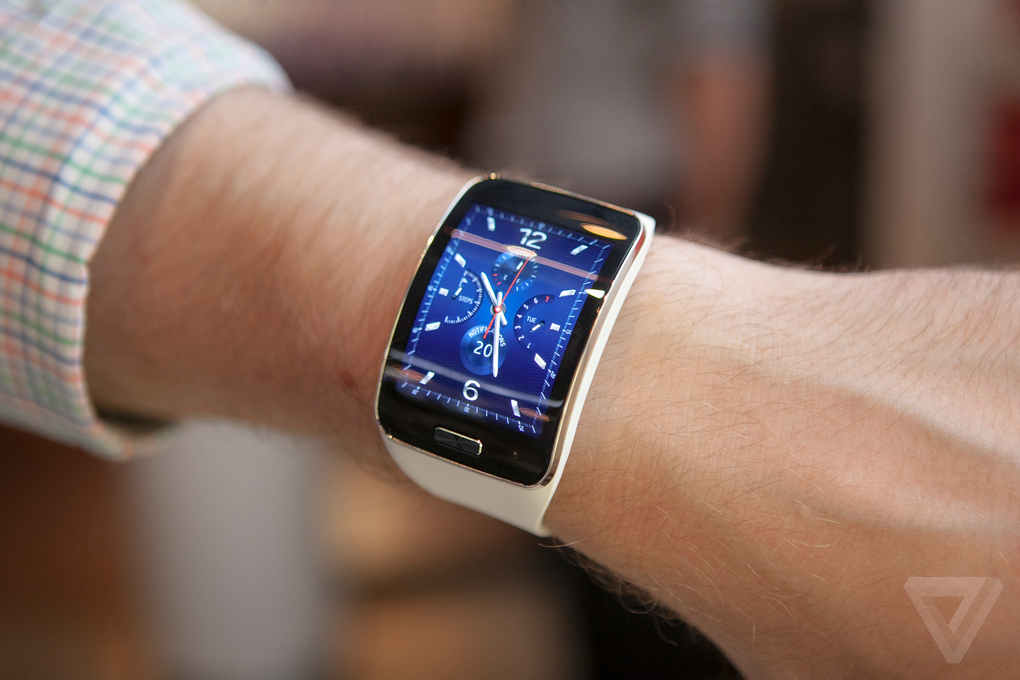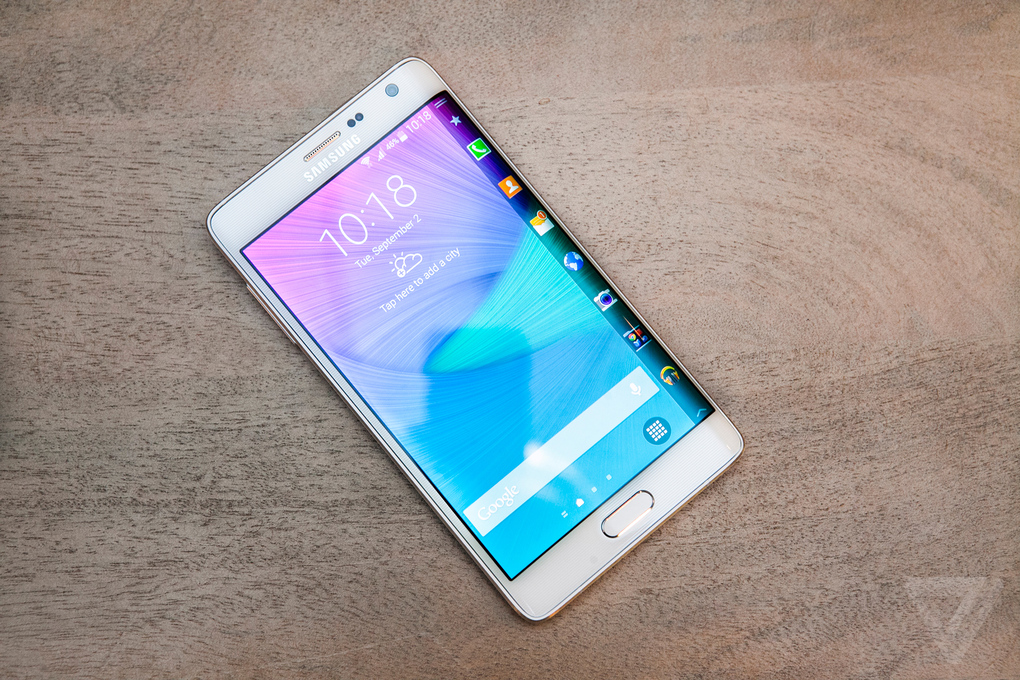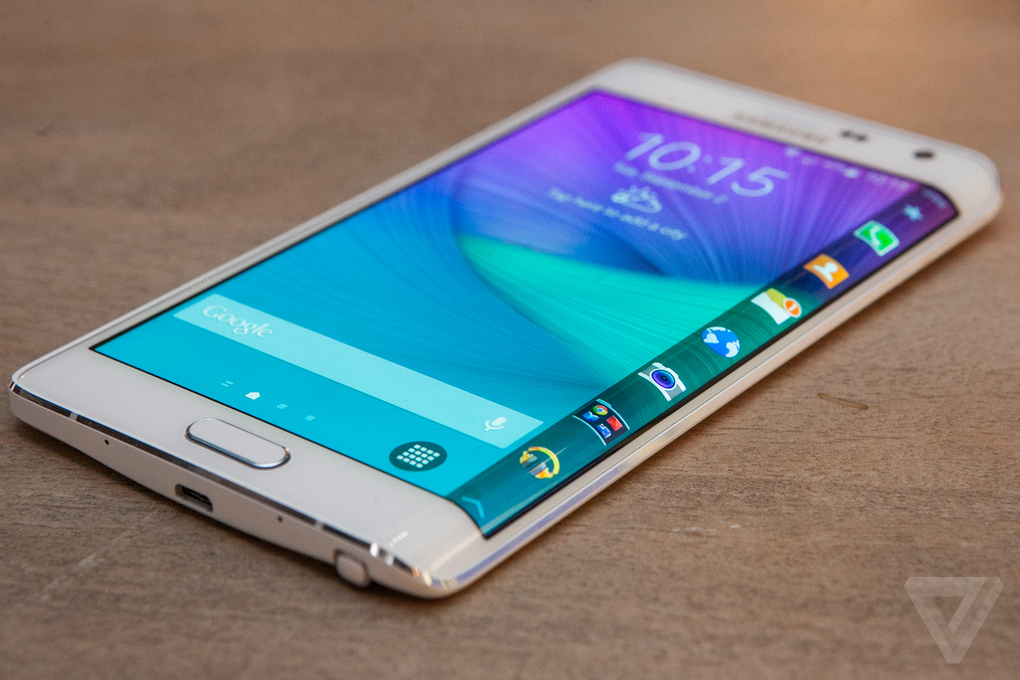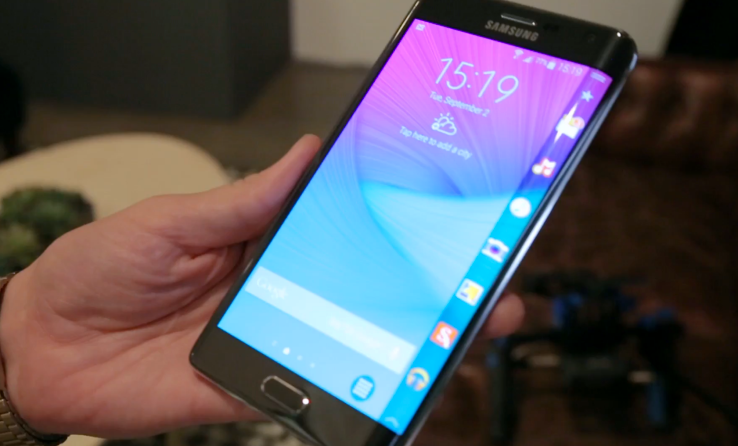From Note 4 To Note Edge, Everything Samsung Announced At Its Unpacked 2014
Samsung's had something of a rough year. But Samsung never gave up, never lost hope in its ability to innovate and still carve its own path in the midst of criticism. So Samsung arrived to its Unpacked 2014 event with new hope and launches. And the Korean manufacturer put forth the best products of the year. Here's a list of gadgets Samsung announced.
1. Galaxy Note 4: It's running Android 4.4 KitKat and has a 5.7-inch AMOLED display with a 2,560 x 1,440 (Quad HD) resolution; that adds up to an incredibly sharp and colorful 518 ppi screen
At the pre-IFA event in Berlin, Samsung has officially announced the Galaxy Note 4, a worthy successor to the company’s fabled phablet lineup and it takes the Note experience to a whole new level with new paradigms for multi-tasking and a better stylus. It’s the first Note phone to feature a QHD display and at 5.7 inches, the display is suitably large. The pixel density goes from a stunning 386ppi to an astounding 515ppi.
 businessinsider.in
businessinsider.in
The display on the Note 4 is a Super AMOLED, and it’s covered by 2.5D Gorilla Glass 3. It features curved sides to make swiping from the edge easier. The Galaxy Note 4 will obviously have a revamped S Pen stylus that offers better grip and more functions. It can be used to resize compatible apps to use two apps simultaneously.
The accompanying software has been spruced up for a clearner, dare-we-say Android L-like look. Snap Note turns photos of printed documents and text into editable text, like an OCR editor. In terms of processing speed, expect two powerful variants; one with Snapdragon 805 chipset, which brings LTE Cat 6 support and another with Samsung’s Exynos 5433 chipset and LTE Cat 4 connectivity. The Note 4 will run Android 4.4 KitKat at launch and with the proprietary interface on top. Connectivity options on the Note 4 are top-of-the-line too with Wi-Fi ac, GPS with Glonass, NFC, Bluetooth v 4.1 (BLE,ANT+), IR LED, USB 2.0, and MHL 3.0.
The cameras on the Note 4 have been enhanced too. The 16-megapixel back camera sports enhanced optical image stabilization or OIS, while the front-facing camera is a 3.7MP sensor with a fast f/1.9 aperture lens. Samsung will let users shoot 120-degree selfies thanks to a panorama-like Wide Selfie mode. The Samsung Galaxy Note 4 boats three microphones for noise suppression and a special app that can silence selected audio sources from a recording, or can isolate background noise out of the recording.
slashgear.comIn terms of design, the Note 4 will have a leather back cover (no clarity on whether this is actually plastic) along with a metal frame like the Samsung Galaxy Alpha. However, there’s no water-proofing or sealing in the body. There’s a 3,220mAh battery, which can supposedly be charged up to 50 percent in just 30 minutes. Samsung will supply an optional Qi wireless charging panel, along with a host of covers and accessories sold separately.
2. Samsung Gear VR: Who knew all you needed to build cutting-edge VR was a huge phone? The Samsung Gear VR uses the Note 4 as its display and was built in concert with Oculus VR.
Samsung has unveiled its Gear VR virtual-reality headset during IFA 2014 at its Samsung Unpacked 2014 Episode 2 event. Sold separately (at a price yet to be announced this fall) will be the coolest phablet accessory in world history: the Gear VR. This is an Oculus Rift-style headset that works only with the Note 4. You insert the Note 4 into the facemask, and the phone automatically enters VR mode when you dock it into the headset.
The Gear VR itself is filled with various sensors, while the processor and the battery of the Galaxy Note 4 handle all the heavy lifting. After removing the visor, users can plug in their Galaxy Note 4 into the device and the 2k display will take over. Samsung is tapping Oculus to power the device, which uses Oculus’ VR store to give users access to content. The Gear VR will also be able to give users access to concerts, 360 degree tours of cities and locations, among other things.
Oculus and Samsung worked diligently on this together, which gives Oculus further distribution in the market with the Oculus store and gives Samsung some credibility and established content hitting a brand new market for the first time. At launch, the Gear VR will come with some special content including a tour of Tony Stark’s Lab (as a part of a partnership with Marvel’s Avengers: Age of Ultron). IMAX is also offering trailers and samples of films to watch in a virtual theater, as well as 360-degree live-action 3D VR for perormances like Cirque Du Soleil and Zarkana. Vevo is also offering access to more than 100,000 HD music videos, live concert events, etc.
 businessinsider.in
businessinsider.in
Samsung didn’t say much about the Gear VR headset, but, like the Galaxy Note Edge and the Note series as a whole, the company is all about leading the tech of the future. VR is an exciting option for big electronics companies, with Facebook buying Oculus, Google getting more deeply immersed in Glass, and now Samsung hopping in the boat. Time will tell how the category matures, but in the short term, you can look for the Gear VR in the fall. No pricing information has been released.
3. Gear S: A combination of Samsung's newest and best ideas, the Gear S is not designed to replace your smartphone. With its built-in connectivity, it's designed to let you leave it at home.
Samsung seems to debut a smartwatch once a month, and with September just getting under way, and Apple reportedly debuting the iWatch next week, it was just about time — see what I did there? — for the company to unveil a new one. And Samsung’s latest wrist-worn computer, the Gear S, might just be its coolest yet. Sporting its own 3G connection, the watch can be used independently of your smartphone, unlike the majority of smartwatches on the market.
Its built-in connectivity means that even when it’s far away from your phone it can still send and receive messages, and get turn-by-turn directions. The Gear S runs Tizen — Samsung says the Gear Store has 1,000 apps in it — and can do almost everything without a phone. The Gear Manager app still requires your phone, and you’re not exactly going to want to send emails on the tiny QWERTY keys on the Gear S, but this device generally has no need for your smartphone.
The watch itself is impressively made, with a 2-inch curved OLED display that looks great from any angle. Waterproof, black or white, thick and heavy, it’s like a larger Gear Fit. A much larger Gear Fit. It’s designed to curl around your wrist, and it’s long enough that it does exactly that; it doesn’t feel like a watch so much as a cuff. It’s a computer on your wrist, and it feels like one. The big, thick bands that come with the device make it feel even larger, but thankfully the Gear S has swappable bands so you can slim it down a little.
Its 1.0GHz processor is clearly up to the task of swiping through notifications, and even tapping out quick responses and tracking steps. It’s also remarkably more powerful than your average smartwatch, able to actually read entire emails and see all your workout and sleep information in one place. This is the rare smartwatch that’s truly independent, not always punting you back to your phone. Samsung offers a handful of nice-looking watchfaces, a heart-rate sensor, and a battery it claims will last two days.
4. Galaxy Note Edge: The nameless prototype from CES 2013 is a reality. Meet Samsung's sloping, curved OLED phone called Galaxy Note Edge, a curved smartphone with a purpose.
The Note Edge is, on paper at least, only the slightest variation on the new Note 4. It has the same metallic design, a huge improvement on anything Samsung’s done before. It has the same soft-touch back, blissfully without the fake stitching. It has the same 16-megapixel camera, the same heart-rate monitor, the same processor, the same memory, the same software, the same new Multi Window feature, the same everything. It's an incredibly high-end, incredibly powerful phone. It even has a Quad HD, 2560 x 1440 display like the Note 4, though this one is slightly smaller at 5.6 inches rather than 5.7. But there's more to the Note Edge than its spec sheet.
It’s on the right side of the phone’s front face that a sharp difference appears between the two models. The screen starts to slope downward, falling off toward the edge and wrapping around the side. It’s as if two screens have been connected to each other at an acute angle, but there’s only one display here. The asymmetry of the phone feels a little odd, like I chipped part of the right side off by accident, but it doesn’t really hurt the aesthetic appeal of the phone. It’s still very comfortable, the metal body both solid and dense, and I like the way the screen curls under my right thumb. (If you’re a lefty, using the Note Edge in one hand is going to be terrible — but then again using a Note in one hand is already terrible.)
Samsung uses software to separate the two parts of the display, to allow them to be simultaneously independent and connected. The sloping screen’s default status is as a quick launcher of sorts, with easy access to a bunch of your most-used apps. There are a number of widgets, though, tickers of sorts that let you flip through news or tweets or information about how many steps you’ve taken. And you can do it all without ever changing or disturbing what you see on the larger display. In some apps, the edge acts as a toolbar, offering easy access to font menus or camera modes or in-app settings. At night, it can be your alarm clock, the time displayed on the side of the phone so you can see it without taking your head off your pillow.
It’s an odd idea, turning this vertical rail into essentially an always-on secondary display. Is it best-suited as a ticker? A notification center? A quick-launch taskbar? Samsung doesn’t seem entirely sure, and in a few minutes of using the Galaxy Note Edge it was clear that while well-implemented and useful the whole idea isn’t necessarily fully formed.
